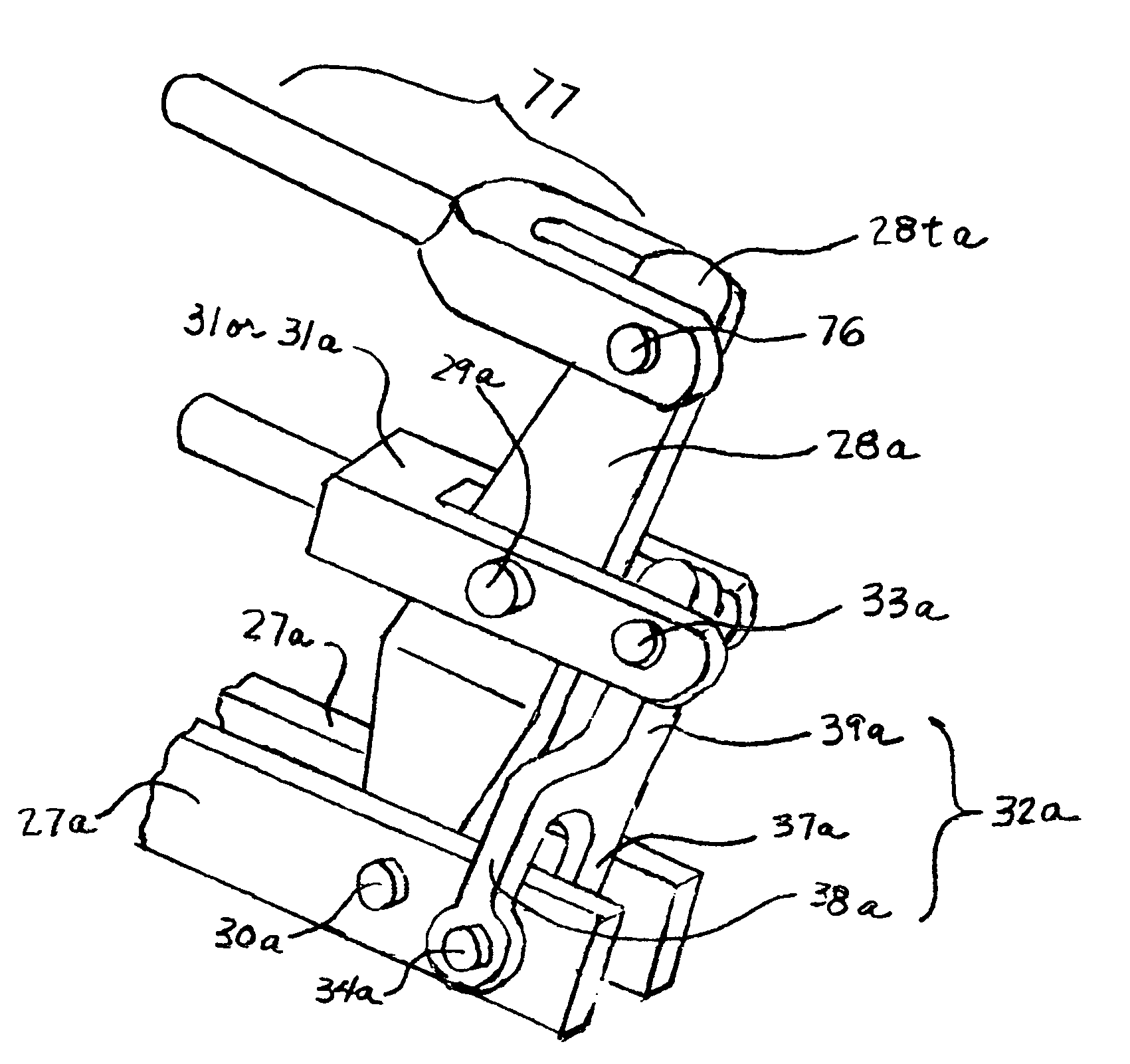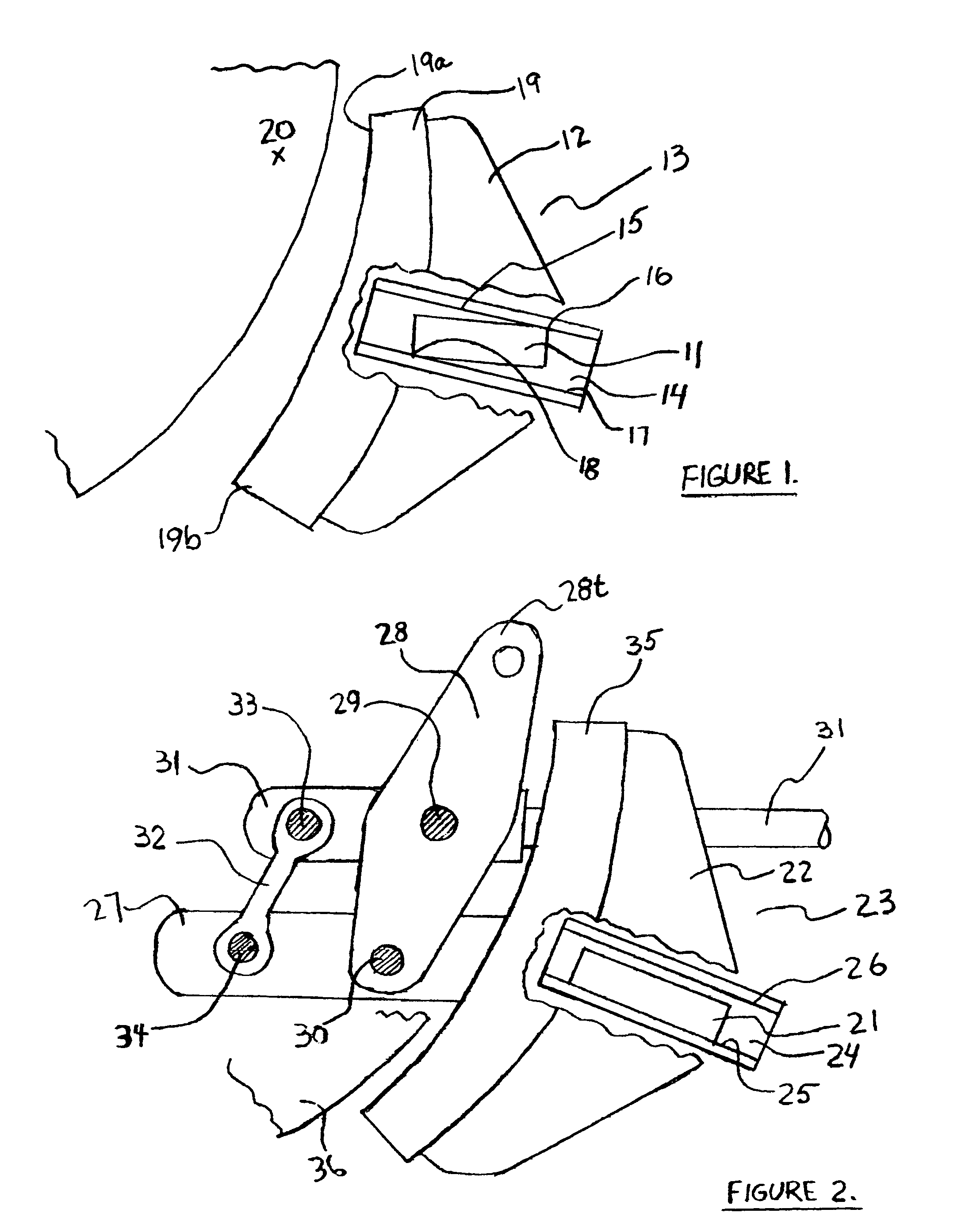Brake system stabilizer assembly
a technology of brake system and stabilizer, which is applied in the direction of brake system, brake arrangement with braking member, transportation and packaging, etc., can solve the problems of severe vibration, wear and distorted members, and the inability to properly align the brake shoes with the wheels
- Summary
- Abstract
- Description
- Claims
- Application Information
AI Technical Summary
Benefits of technology
Problems solved by technology
Method used
Image
Examples
Embodiment Construction
[0018]In FIG. 1, end guide 11 and brake head 12 are parts of brake beam assembly 13 in the prior art. Brake shoe 19 is installed and fastened in brake head 12. End guide 11 is positioned within upper surface 15 and lower surface 17 of wear liner 14 (visible in the cut-out areas of brake head 12 and brake shoe 19). End guide 11 may make contact with inside surfaces 15 and 17 at corners 16 and 18 when the brakes are applied.
[0019]Repeated brake applications may cause end guides 11 and wear liner 14 to wear away at areas 16 and 18. These worn areas allow end guide 11, brake head 12, brake beam assembly 13 and brake shoe 19 to rotate in a counter-clockwise direction as depicted in this figure. In this orientation, wear of brake shoe 19 will be greater in the top area 19a compared to bottom area 19b. At some point in time, top area 19a will wear to the minimum thickness allowed while a large fraction of the brake friction material originally available at bottom area 19b still remains. At...
PUM
 Login to View More
Login to View More Abstract
Description
Claims
Application Information
 Login to View More
Login to View More - R&D
- Intellectual Property
- Life Sciences
- Materials
- Tech Scout
- Unparalleled Data Quality
- Higher Quality Content
- 60% Fewer Hallucinations
Browse by: Latest US Patents, China's latest patents, Technical Efficacy Thesaurus, Application Domain, Technology Topic, Popular Technical Reports.
© 2025 PatSnap. All rights reserved.Legal|Privacy policy|Modern Slavery Act Transparency Statement|Sitemap|About US| Contact US: help@patsnap.com



